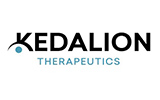
Anti-obesity therapeutics are referred as the treatment that reduces and control the body weight. The obesity is rising due to the lack of physical activities, improper or lack of sleep, high calorie diet, and fast food and heredity history of the person. The ideal anti-obesity therapeutics follows mechanisms that regulate energy balance which have substantial built-in-redundancy and overlap with other physiological functions of the body.
This report elaborates the market size, market characteristics, and market growth of the Anti-Obesity Therapeutics industry, and breaks down according to the type, application, and consumption area of Anti-Obesity Therapeutics. The report also conducted a PESTEL analysis of the industry to study the main influencing factors and entry barriers of the industry.
In Chapter 3.4 of the report, the impact of the COVID-19 outbreak on the industry was fully assessed. Fully risk assessment and industry recommendations were made for Anti-Obesity Therapeutics in a special period. This chapter also compares the markets of Pre COVID-19 and Post COVID-19.
In addition, chapters 8-12 consider the impact of COVID-19 on the regional economy.
Key players in the global Anti-Obesity Therapeutics market covered in Chapter 13:
Alizyme
Eisai Company
Norgine Pharmaceuticals Ltd.
Shionogi USA
Novo Nordisk
BoehringerIngelheim GmbH
Rhythm Pharmaceuticals
Vivus
FlaxoSithKline plc.
Zafgen
Pfizer
Bristol-Myers Squibb
Takeda Pharmaceutical
In Chapter 6, on the basis of types, the Anti-Obesity Therapeutics market from 2015 to 2025 is primarily split into:
Centrally Acting Anti-obesity Drugs
Peripherally Acting Anti-obesity Drugs
In Chapter 7, on the basis of applications, the Anti-Obesity Therapeutics market from 2015 to 2025 covers:
Hospital Use
Clinic Use
Household
Other
Geographically, the detailed analysis of production, trade of the following countries is covered in Chapter 4.2, 5:
United States
Europe
China
Japan
India
Geographically, the detailed analysis of consumption, revenue, market share and growth rate of the following regions are covered in Chapter 8, 9, 10, 11, 12:
North America (Covered in Chapter 8)
United States
Canada
Mexico
Europe (Covered in Chapter 9)
Germany
UK
France
Italy
Spain
Others
Asia-Pacific (Covered in Chapter 10)
China
Japan
India
South Korea
Southeast Asia
Others
Middle East and Africa (Covered in Chapter 11)
Saudi Arabia
UAE
South Africa
Others
South America (Covered in Chapter 12)
Brazil
Others
Years considered for this report:
Historical Years: 2015-2019
Base Year: 2019
Estimated Year: 2020
Forecast Period: 2020-2025
























